
Station Name: THE HAWTHORNS[Source:
Terry Callaghan]
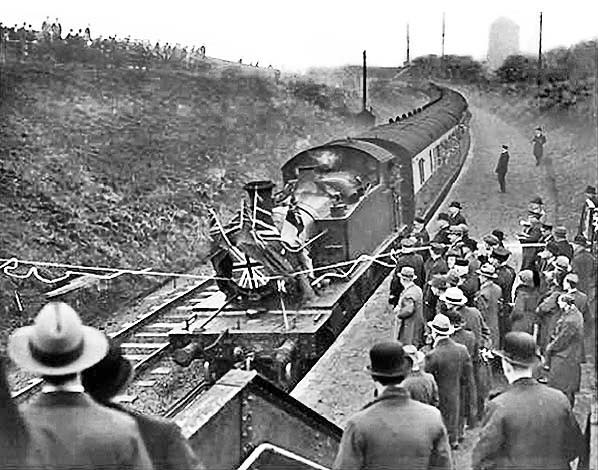 Opening day on 25 December 1931 saw 2-6-2T 4575 Class loco head the first train through the station which is arriving here on the up platform located on the Old Hill branch. The loco has been decorated for the ribbon-breaking ceremony and the whole scene is surveyed by spectators, not only on the platform but on the embankment to the left.
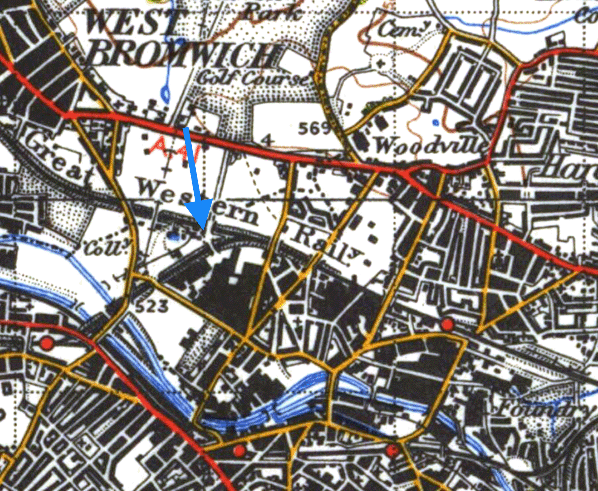 
The 1937 1:2500 OS map shows the three platforms on the Wolverhampton side of Halfords Lane.
Click here to see a large version of the map. 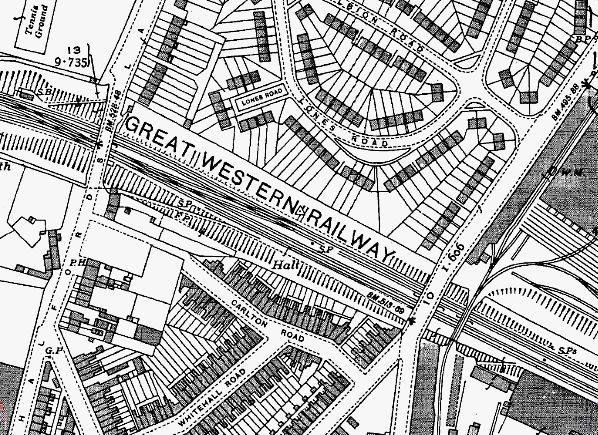
The 1937 1:2500 OS map showing the single platform located on the down relief lines on the Birmingham side of Halfords Lane.
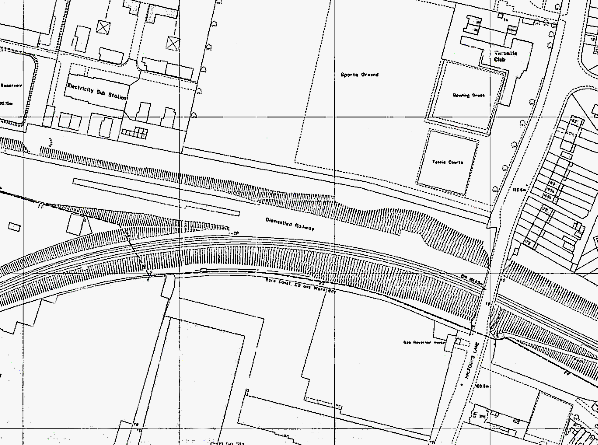 The OS 1:1500 plan shows the dismantled section towards Wolverhampton, which were the former main passenger lines with the relief passenger lines curving away in the Langley Green direction. These lines were retained for access to a local scrap yard.

An aerial view in 1950 of the three platforms west of Halfords Lane. The wide footbridge from the up branch and the down Wolverhampton platform can clearly be seen along with the entrance structure from the footpath.
Photo reproduced with kind permission from Simmons Aerofilms Click here to see a larger image 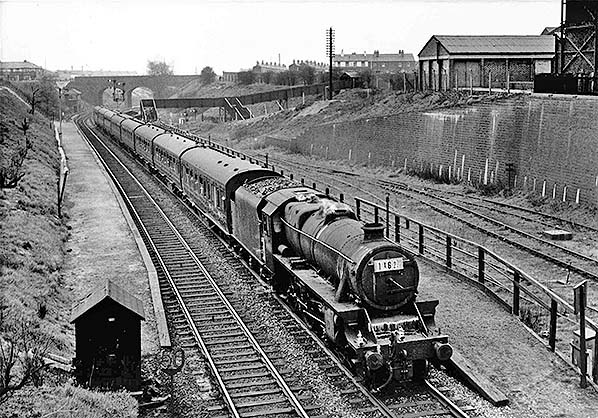 With the camera facing towards Birmingham, and with Handsworth Junction signal box in the left background, filthy Class 5MT 4-6-0 No.44907 waits at The Hawthorns Down Main platform with train 1X62, a return football special to Liverpool on 25 March 1961. The train, which appears to be formed entirely of Stanier Period III corridor stock, was due to depart at 5.17pm. Quite why the locomotive is displaying lamps in the Class 3 position is unclear. What at first glance looks like hands out of the windows of the first two carriages appear, on close examination, to be mere reflections. The impression given is that the train was empty and still awaiting its passengers. The men standing on the steps of the footbridge may have been accompanying the photographer or may have been match stewards. Just visible beneath the footbridge is the Old Hill line and part of the platform on that line. The fourth platform (see maps) can just be discerned beyond the road bridge in the distance. The League Division One, as it was then known, match on this occasion was West Bromwich Albion v. Everton, which the home team won 3-0. The Hawthorns Stadium sits some 300 yards to the north of station. This match is of note as being the final appearance for Everton of Peter Kavanagh, who made just six appearances for the club's first team and who was criticised, using the more polite parlance of the time, as being 'inexperienced' despite his previous perfomance at Romford grabbing Everton's attention. The name is not to be confused with that of the better known prewar Irish footballer of Bohemian and Celtic fame. West Bromwich and Everton FCs are of course still with us today but the same cannot be said of No.44907. She was transferred from Carlisle Upperby to Edge Hill in September 1949 and was to spend the remainder of her BR time at the Liverpool shed. Withdrawn on 4 November 1967, she was scrapped by J.Cashmore, Newport, in June of the following year.
Photo by Mike Mensing 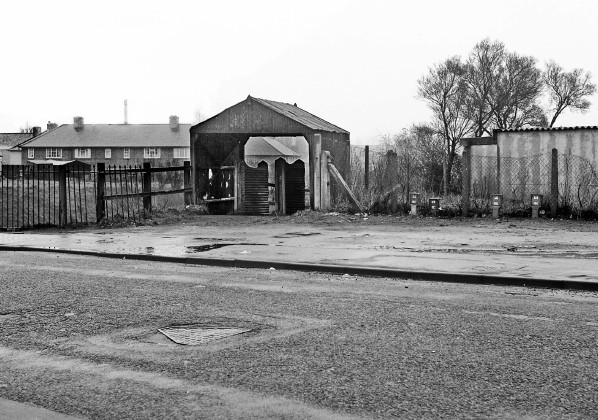 The entrance from Halfords Lane to the single down branch platform. This structure and a similar shelter over the entrance to the branch and down Wolverhampton platform were the only structures that the railway company saw fit to build. Photo from the John Mann collection  A general view south from the up Birmingham platform. The basic materials of construction used for the platforms is quite evident. A general view south from the up Birmingham platform. The basic materials of construction used for the platforms is quite evident.Photo from the John Mann collection 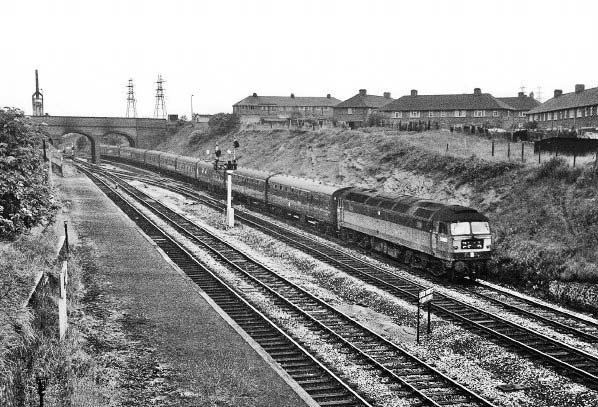 The view north in 1966 showing the single, down Old Hill direction, platform with a Brush Type 4 (latterly Class 47) locomotive heading in the Birmingham direction with, what looks to be a Birkenhead Woodside to London Paddington express. The single platform is in remarkable condition in comparison to the three platforms, west of the Halfords Lane overbridge, in the distance. Photo by John Evans 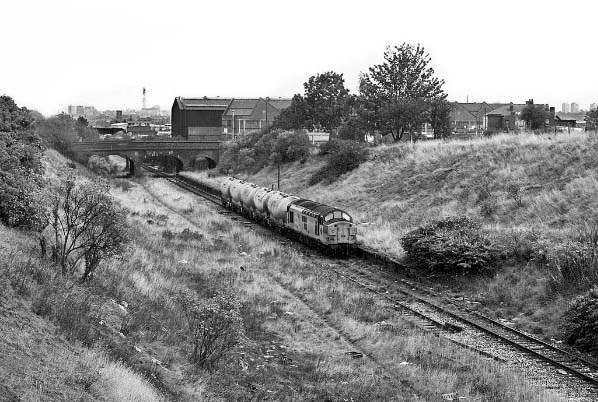 Class 37 37 029 ambles through the derelict single down branch platform on 28 September 1990. The loco is hauling Bescot 'T48' trip taking empty Blue Circle cement tanks from Handsworth back to Bescot Yard (via Langley Green Yard). T48 also served the coppers metals scapyard at Handsworth and the Albright & Wilson chemical works on the former Oldbury branch. The train is heading along what was the down branch (Old Hill direction) line with a short section of the up branch in situ, next to the locomotive. The platform ramp up to the Halfords Lane exit is still discernible. Class 37 37 029 ambles through the derelict single down branch platform on 28 September 1990. The loco is hauling Bescot 'T48' trip taking empty Blue Circle cement tanks from Handsworth back to Bescot Yard (via Langley Green Yard). T48 also served the coppers metals scapyard at Handsworth and the Albright & Wilson chemical works on the former Oldbury branch. The train is heading along what was the down branch (Old Hill direction) line with a short section of the up branch in situ, next to the locomotive. The platform ramp up to the Halfords Lane exit is still discernible.Photo by P Dorney from the Ivan Stewart collection on Flickr 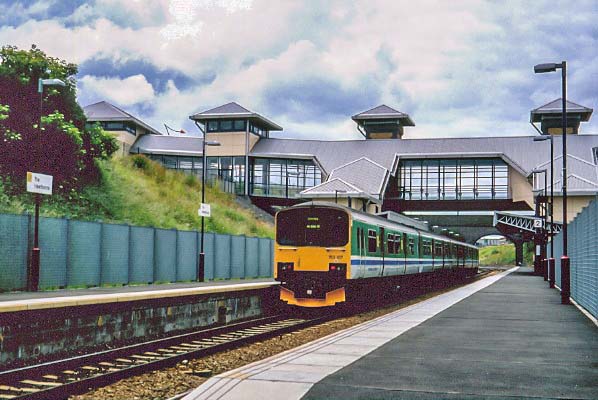 Looking in the Wolverhampton direction on 2 July 1996 at the rebuilt station, a BREL Class 150/1 No.150 107 is standing at platform 1 with a Stourbridge-bound service. The specification for high quality stations to be provided along the ‘Jewellery Line’ is evident with lifts provided to all platforms along with an aesthetically pleasing structure. Looking in the Wolverhampton direction on 2 July 1996 at the rebuilt station, a BREL Class 150/1 No.150 107 is standing at platform 1 with a Stourbridge-bound service. The specification for high quality stations to be provided along the ‘Jewellery Line’ is evident with lifts provided to all platforms along with an aesthetically pleasing structure.Photo by Alan Young 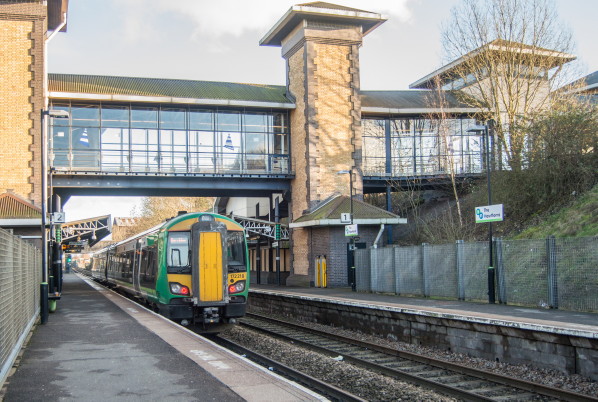 Looking towards Birmingham on 31 January 2016 with a London Midland Class 172 No.172 218 departing for Whitlocks End. The station is still well maintained and fully staffed and certainly a vast improvement on the original one. Photo by Robert Callaghan 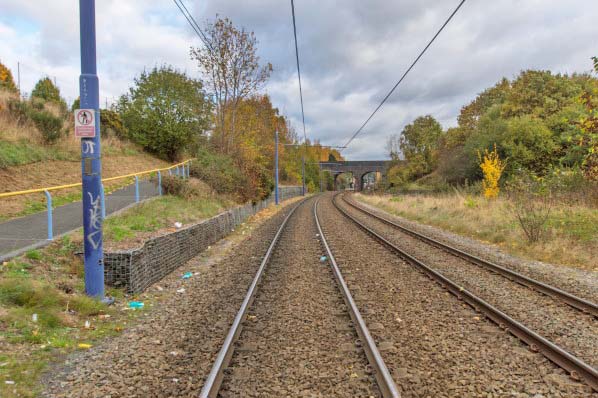 Looking east along the former main line alignment, now occupied by the Midlands Metro. The footpath, left, is roughly in the same alignment as the original station; the Birmingham-bound platform (main) would have been to the left with the Wolverhampton platform to the right Photo by Terry Callaghan Click here to see a comparison
|
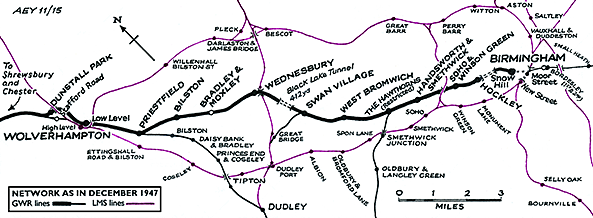
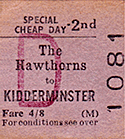 were provided, all from Halfords Lane: the up Birmingham platform was reached by a footpath north of the railway bridge and the down Wolverhampton and up branch platform by a footpath west of the southern end of the railway bridge. The platforms connected by a wide footbridge. Crudely designed shelters of no architectural merit covered the street-level entrances. The single platform, to the east of the railway bridge on the southern end, had a footpath leading to it. The platforms were constructed from old sleepers forming the face with compacted cinders for the surface. Lighting was not initially provided although the GWR latterly erected lampposts to which oil-fired Tilley lamps could be attached when necessary. The station did not appear in the company timetables and was used on match days only with service trains making an additional stop and football specials calling. Opening day would see West Bromwich play local rivals Birmingham City and the station would welcome 17 specials run to and from it conveying hundreds of fans,;West Bromwich would go on to win the game 2-1. The station has sometimes been listed in The Station Handbook with the suffix Halt attached and in 1938 and 1956 as ‘The Hawthorns West Bromwich Platform’; station signage was in the form of a single name board on each platform.
were provided, all from Halfords Lane: the up Birmingham platform was reached by a footpath north of the railway bridge and the down Wolverhampton and up branch platform by a footpath west of the southern end of the railway bridge. The platforms connected by a wide footbridge. Crudely designed shelters of no architectural merit covered the street-level entrances. The single platform, to the east of the railway bridge on the southern end, had a footpath leading to it. The platforms were constructed from old sleepers forming the face with compacted cinders for the surface. Lighting was not initially provided although the GWR latterly erected lampposts to which oil-fired Tilley lamps could be attached when necessary. The station did not appear in the company timetables and was used on match days only with service trains making an additional stop and football specials calling. Opening day would see West Bromwich play local rivals Birmingham City and the station would welcome 17 specials run to and from it conveying hundreds of fans,;West Bromwich would go on to win the game 2-1. The station has sometimes been listed in The Station Handbook with the suffix Halt attached and in 1938 and 1956 as ‘The Hawthorns West Bromwich Platform’; station signage was in the form of a single name board on each platform. 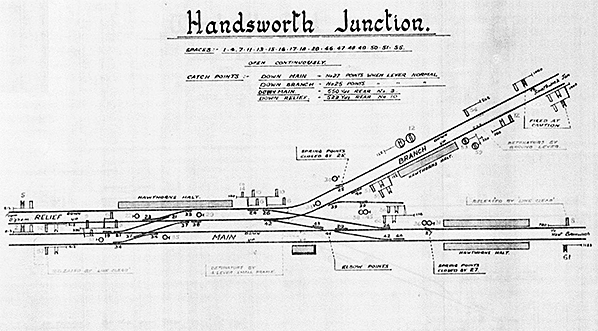

 Home Page
Home Page